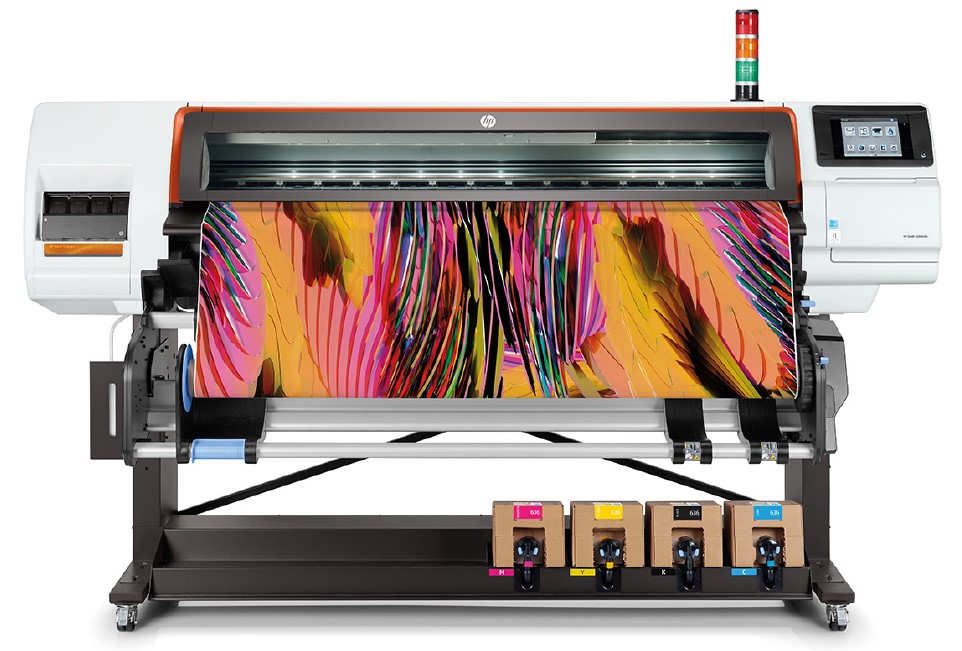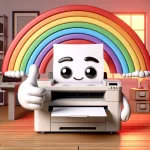
Sublimation is quickly becoming popular with small businesses and crafters alike. For a small investment and little instruction anyone can start doing heat transfers. It doesn’t take much to get good results transferring designs to polyester fabric or rigid blanks.
A computer is a given. Plus there are free apps to make high quality computer designs. As for equipment, you’ll need a sublimation printer and heat press.
If you’re looking for the best HP sublimation printer, you’ll be disappointed to know your average HP printer can’t use sublimation ink. Sorry to say the thermal print heads found in your Officejet, Deskjet, or Envy printer will get ruined if you put sublimation ink in their ink cartridges.
The only dye-sublimation printers from HP are part of the Stitch series. These are production printers that cost north of fifteen thousand dollars. While they are good for production they are not suitable for home use.
HP Stitch S500 & S1000
The HP Stitch S sublimation printers are extremely large compared to other sublimation printers. The HP Stitch S1000 is 19 feet, yes feet, wide. While it might fit in my basement, it would be impossible to get it down there.
I’ve helped deliver several plotters and they do not manage stairs well. If you like office humor you may like reading about the moving experiences in my ebook The Copier Jam.
The HP Stitch S500 is a bit more reasonable at 8 feet wide. What HP gets right is ease of use. They definitely are easier to operate and setup production runs than other plotters I’ve seen.
However, they are on the high end for production costs. Roland DGA RT-640 and Epson Surecolor F9470H operating expenses are much better than the HP S500.
The HP Stitch S500 has good print speed and is easy to use. The nesting feature saves sublimation paper and time. It orientates your print to use the least amount of paper.
While the HP S500 has 1440 dpi, most textiles only need 720 dpi. The extra print nozzles don’t translate to better photo quality. But they are handy when a nozzle clogs. It takes more than a dozen or so to clog before it’s noticeable.
Quality wise the HP S500 has good saturation and vibrant colors. Browns, blacks, and other darker colors could be better. But any vivid color will pop.
Roland Textart TR-640 and Epson Surecolor F9470H both have better quality than the HP S500. Although, any plotter I’ve seen with 6 or 8 colors has always had better quality than ones with 4 colors like the HP S500.
HP Alternatives
While the HP Stitch S500, Roland Textart TR-640, and Epson Surecolor F9470H are great sublimation printers in their own right, they’re not for a home office or small businesses. Their size and cost (all over $15k) put them well out of reach for any home use.
Which means the best HP printer for sublimation is not going to be a regular inkjet printer. If you want to do sublimation at home, you’ll have to get something other than an HP printer (or Canon for that matter).
Sawgrass SG printers are an excellent choice for sublimation. Epson printers are also a good choice for sublimation. Brother printers are compatible with dye sublimation ink as well but I don’t think the make the best sublimation printer.
Sawgrass or Epson sublimation printers have the best results. Individual models , Epson, and Brother inkjet printers are compatible with sublimation ink. If you’re looking for sublimation printer for home or small business you will be much better off getting one of those.
FAQ
Not with your average HP Envy, Officejet, Deskjet, or Smart tank printers. Only HP Stitch S500 and S1000 are capable of sublimation and they cost over $10,000.
There are several printers from Sawgrass, Epson, and Brother that make excellent sublimation printers.
If you use sublimation ink with your HP Envy it will ruin the print head.
If you use sublimation ink with your HP Smart tank in will ruin the print head.

The Copier Guy, aka Dave. I’ve worked on scanners, printers, copiers, and faxes over 23 years. When I’m not fixing them I’m writing about them. Although, I’m probably better at fixing them. I’ve worked with every major brand. As well as several types of processes. If it uses paper I’ve probably worked on one.





